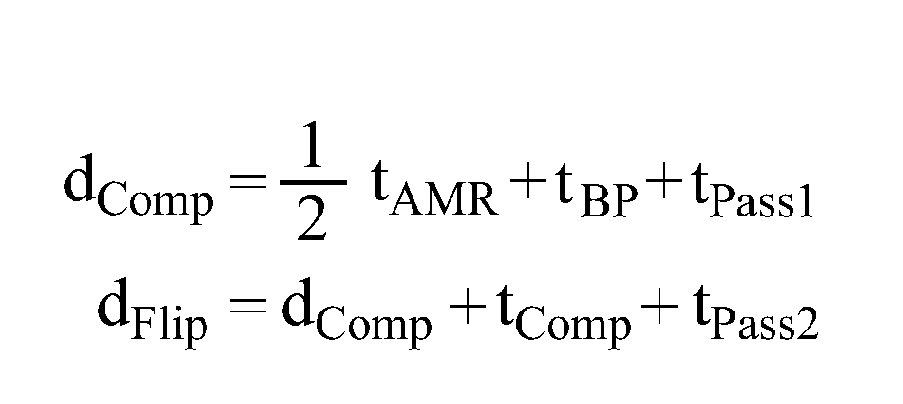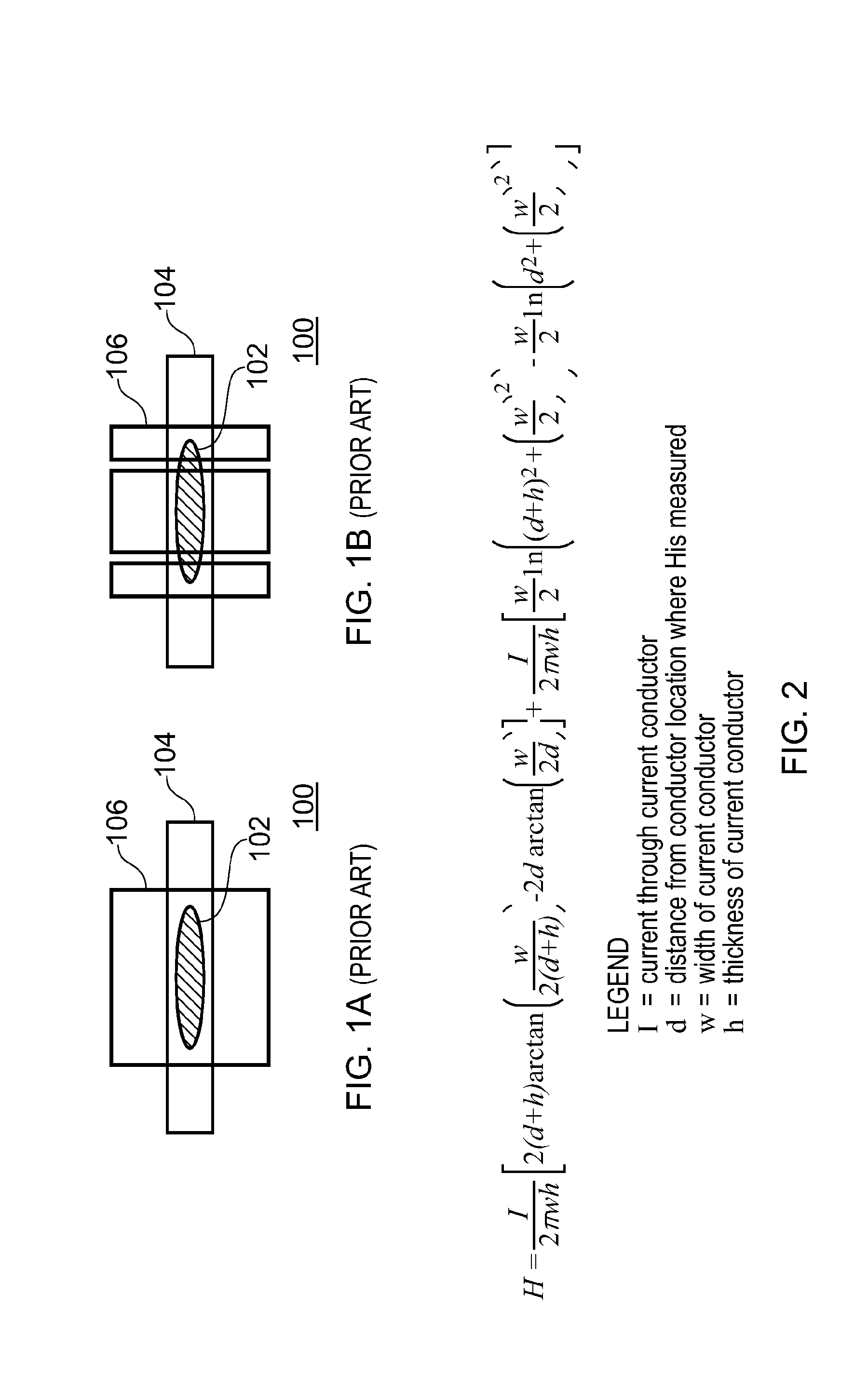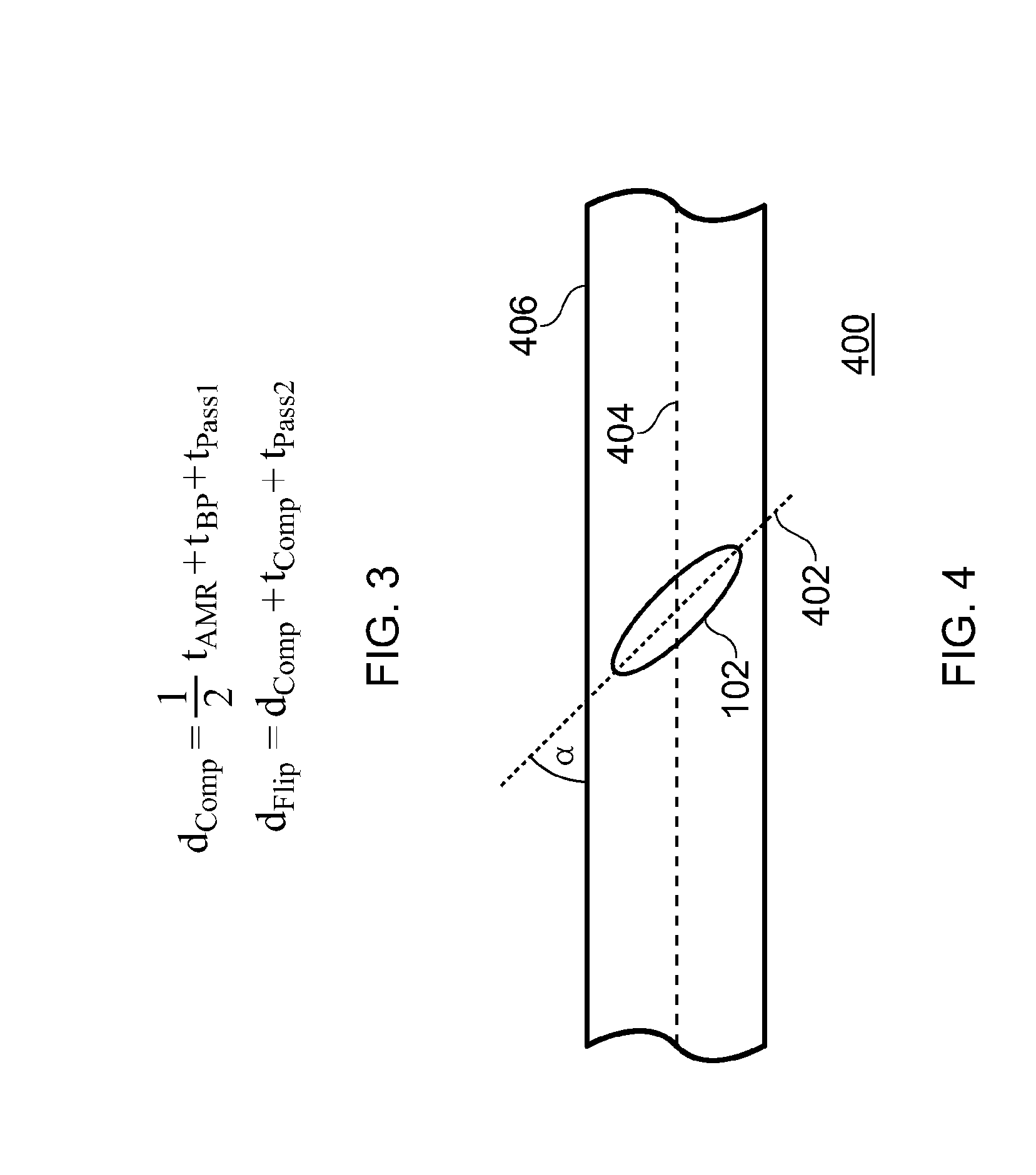Mr magnetometer with combined flip coil and compensation coil
- Summary
- Abstract
- Description
- Claims
- Application Information
AI Technical Summary
Benefits of technology
Problems solved by technology
Method used
Image
Examples
first embodiment
[0029]In the invention the angle α between the main axis of the element and the main axis of the sensor is about 45°. Then, efficiency numbers for the optimal case wherein α is 90° (previously denoted by the symbol “⊥”), should be multiplied by geometrical factors cos (45°)=1 / √2 and sin (45°)=1 / √2, for compensation and flip operations, respectively. As a result the efficiency GComp equals the efficiency GFlip and amounts to 3.48 A / m per mA.
[0030]For the compensation functionality, current pulses are used with small amplitude and of long duration, during which at least one magnetometer reading can take place. The amplitude is in the order of the strength of the earth-magnetic field (approx. 50 micro-Tesla), or lower. The pulse duration is in the millisecond range, or longer, in order to allow for a stable magnetometer reading.
[0031]For the flip functionality, current pulses are used with high amplitude and of short duration. As discussed before, this is to take place between consecut...
second embodiment
[0033]In the invention, the angle α can be given another value so that the configuration is optimized for low power consumption. Power consumption to be considered in this respect is related to the power dissipated during compensation operation and flip operation. Consider an angle α that is larger than 45°. For example, angle α is 75°. As a result the efficiency GComp of the compensation coil functionality is 1.27 A / m per mA, and the efficiency GFlip of the flip coil functionality is 4.75 A / m per mA. The ratio in efficiency for flip functionality and compensation functionality in this case is about a factor 4.
[0034]In power-optimized designs it is anticipated that this ratio will be in the order of 2 to 10. It is to be noted that the compensation operation occurs seldom, e.g. during the manufacturing final test and the sensor self-test. Therefore, the efficiency of the compensation operation need not be high at all. Moreover, the main aim of the compensation operation is to measure...
PUM
 Login to View More
Login to View More Abstract
Description
Claims
Application Information
 Login to View More
Login to View More - R&D
- Intellectual Property
- Life Sciences
- Materials
- Tech Scout
- Unparalleled Data Quality
- Higher Quality Content
- 60% Fewer Hallucinations
Browse by: Latest US Patents, China's latest patents, Technical Efficacy Thesaurus, Application Domain, Technology Topic, Popular Technical Reports.
© 2025 PatSnap. All rights reserved.Legal|Privacy policy|Modern Slavery Act Transparency Statement|Sitemap|About US| Contact US: help@patsnap.com



